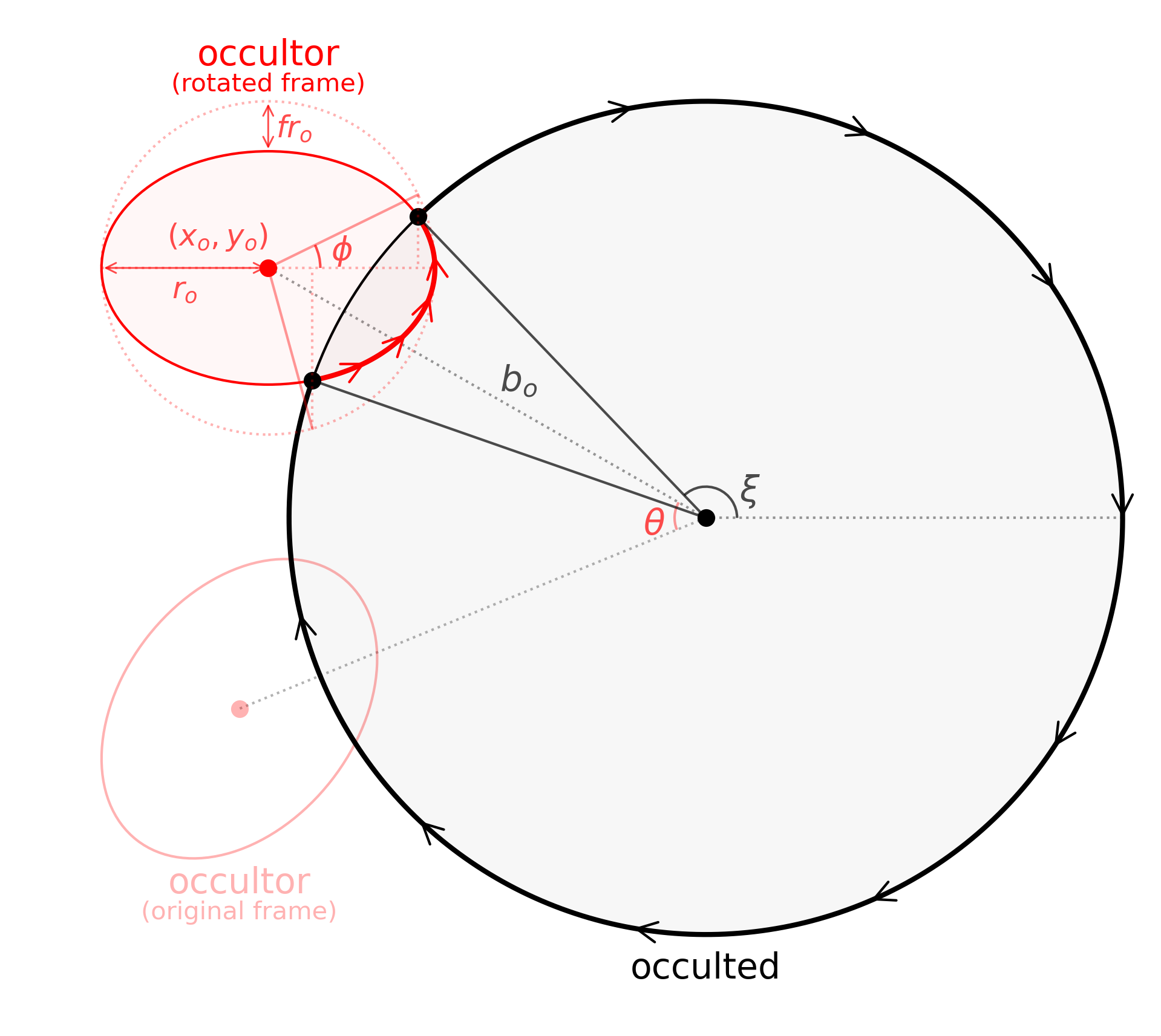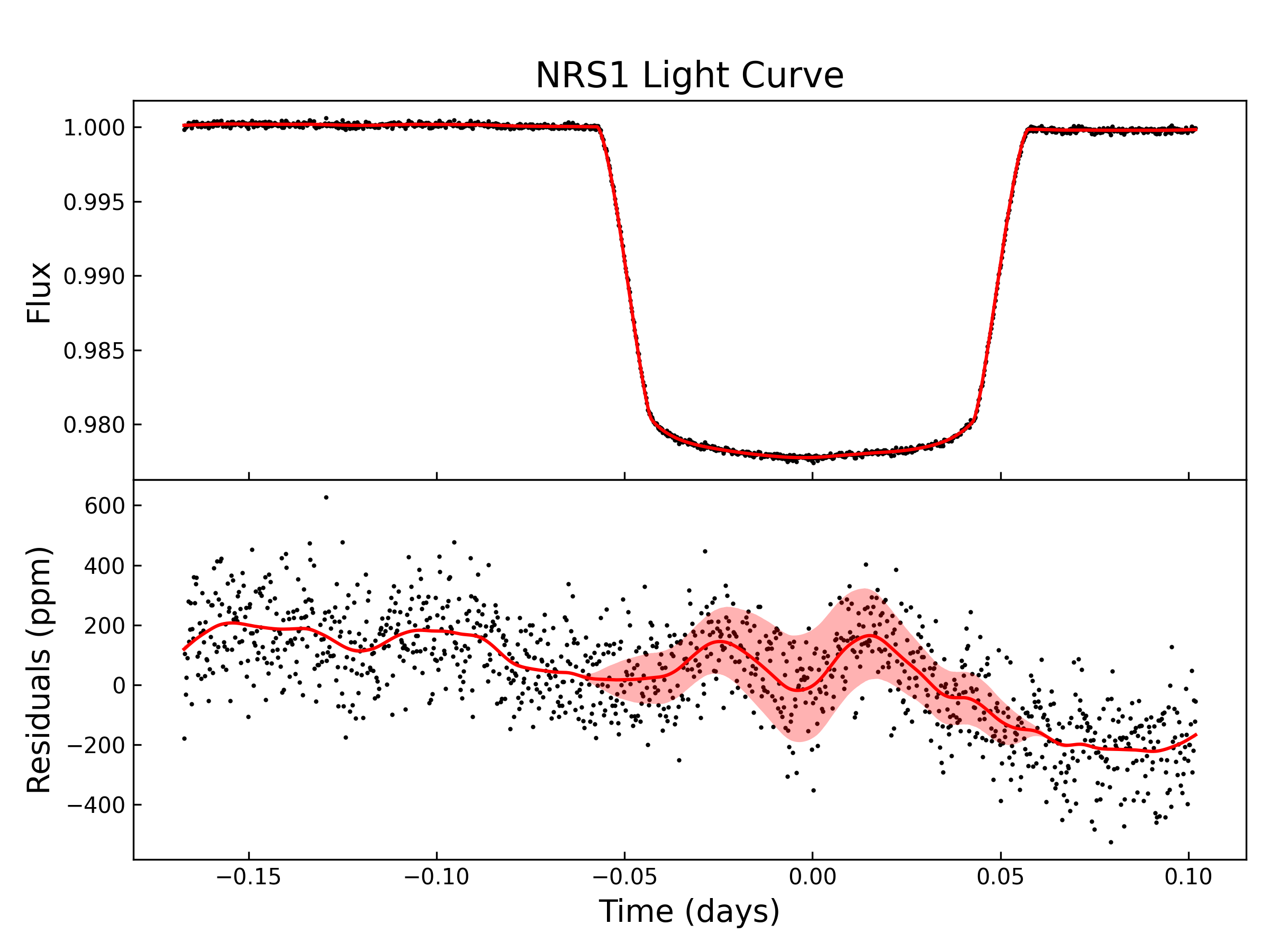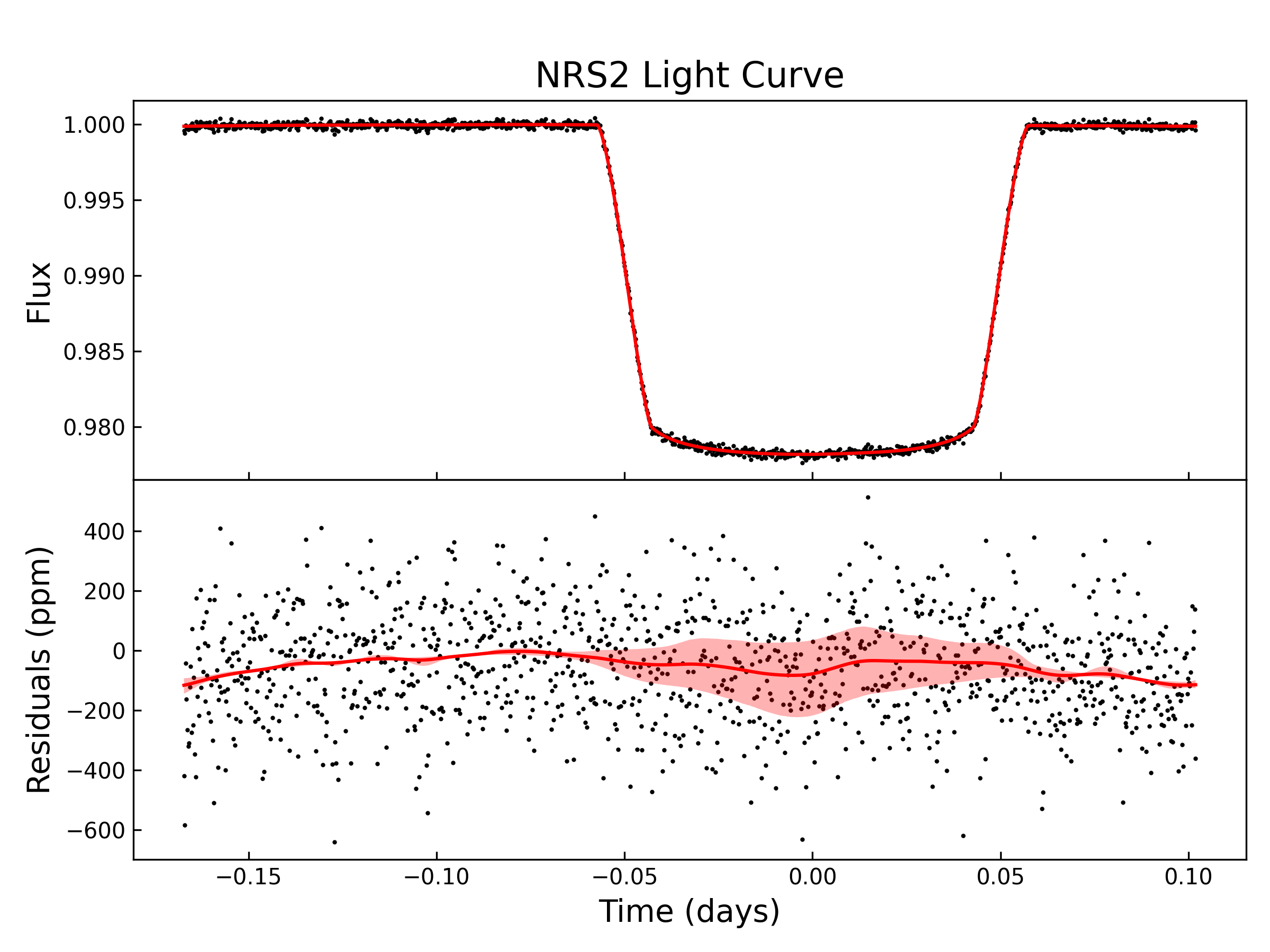Oblate planets
Check out the paper on this new method and the code eclipsoid for modelling transits of oblate planets.
Rotational deformation
Planets all rotate, and their rotation causes them to deform from the perfect spheres we imagine them to be. Saturn and Jupiter in our Solar System both rotate once around every 10 hours, and they are each shorter at their poles compared to their equator as a result (around 10% shorter for Saturn and 7% for Jupiter). Can we detect this shape difference from transits with JWST?
Why do we care? For one, it tells us about the rotation rate and structure of exoplanets (through something called the Love number). But also, the transit signature of oblateness gives us the tilt, or obliquity for free as well. Like Earth’s 23° tilt gives us the seasons, or Uranus’ 98° hinting at a past impact.
Ellipsoidal transit model

We came up with some new, more general math based on the starry package to calculate the transit shapes for any kind of ellipsoidal planet, along with any surface map on the planet or star. We’ve implemented this in a new package called eclipsoid.
Using our JAX-based package, we set out to simulate JWST observations of long-period transiting giant exoplanets and demonstrate how automatic differentiation can be used to infer oblateness and obliquity from transit light curves with unprecedented speed and accuracy!
We find that across the entire population, some planets stand out from the rest as being really good targets for JWST to look for their oblateness and obliquities, like TOI2589 b, NGTS-30 b, and HIP41378 f. Some, like NGTS-30 b (a young gas giant in a 98 day orbit), would give pretty tight constraints on both oblateness and obliquity whether they are aligned or misaligned. This is especially good if we want to use these as proxies to study their formation histories.
This is a challenging technique, with a lot of combinations of oblateness and obliquity producing very similar light curves that are hard to distinguish. We show that planets with higher impact parameters usually are less degenerate.
WASP-107 b
Now for the real life test! We apply our new method to JWST observations of WASP-107 b, a puffy Neptune-mass planet that has an exquisitely precise NIRSpec transit. At the level we’re looking at, there is some correlated noise that we fit with a Gaussian process.
 |
 |
We constrain WASP-107 b to be rotating more slowly (>13h rotation period) than Saturn or Jupiter in our solar system, assuming it isn’t inclined. This is somewhat expected, since it should be tidally locked to its host star, but still a good test of our method!
Future goals:
In this paper we focus on oblateness, but eclipsoid can be used to model any ellipsoidal planet, whether it’s distorted by rotation or tides, and any surface map on planet or star. This, with autodiff in Jax, could let us look at full phase curves of ellipsoidal planets! It can also be used to investigate the oblateness of planets in the presence of starspots. Soon, I’m hoping to add all the features of oblate starry so eclipsoid becomes a one-stop-shop for modelling deformed objects with surface maps.
